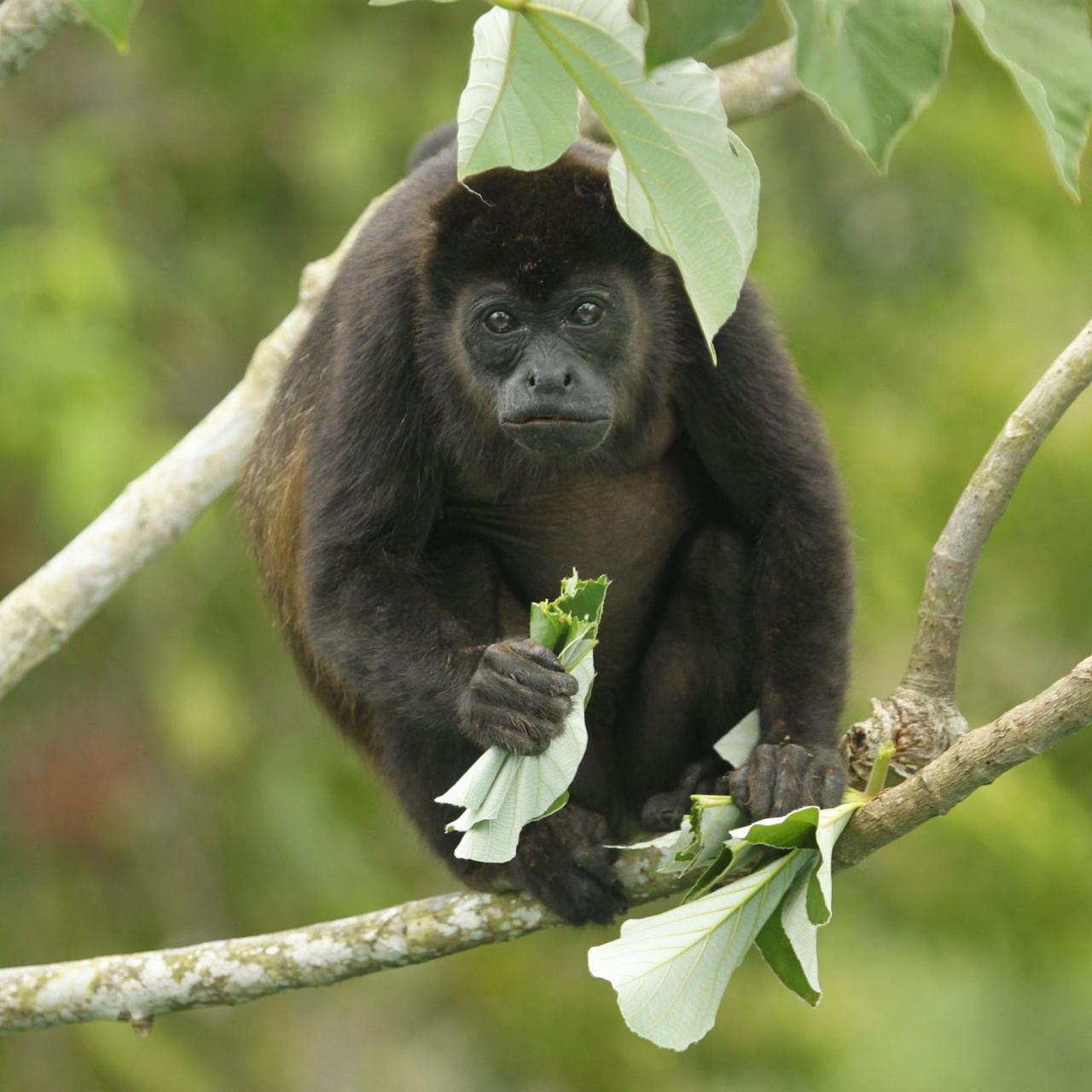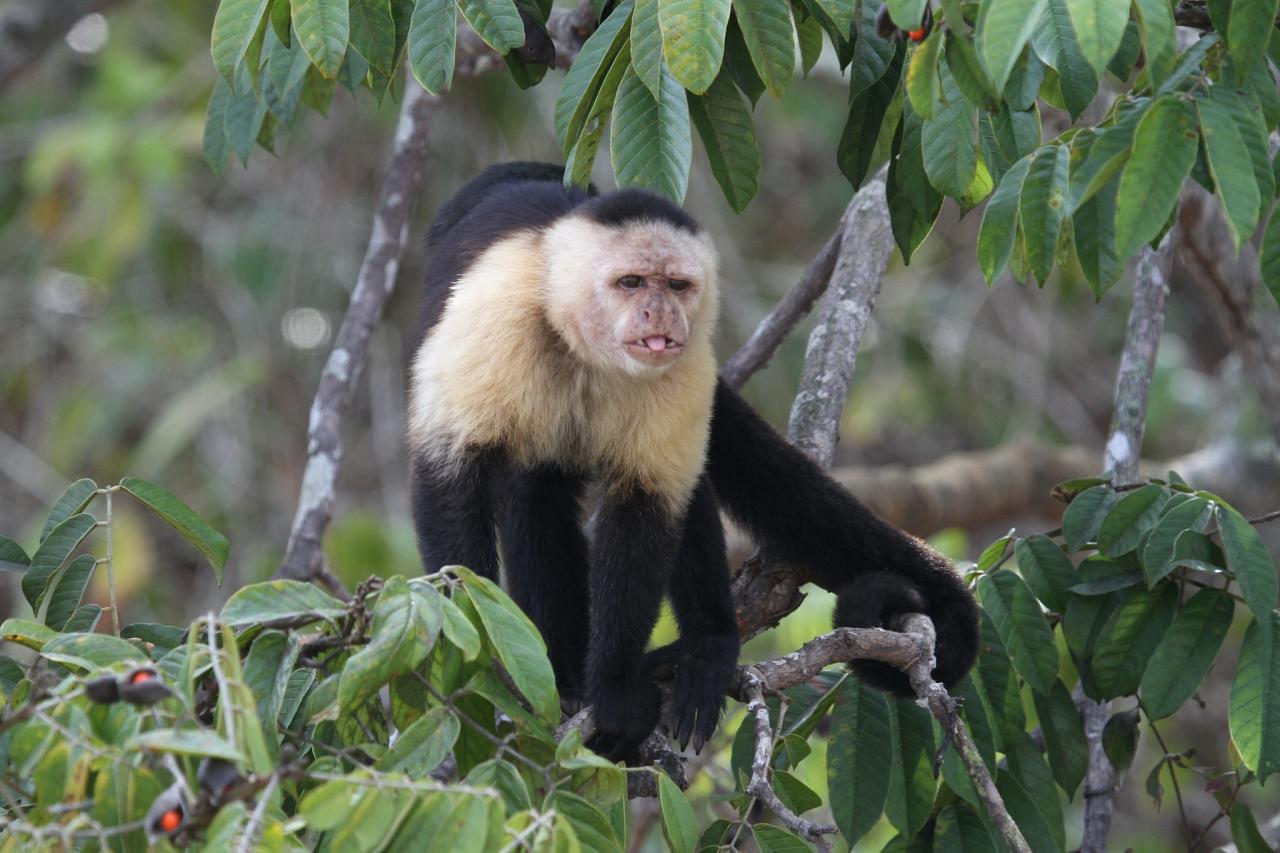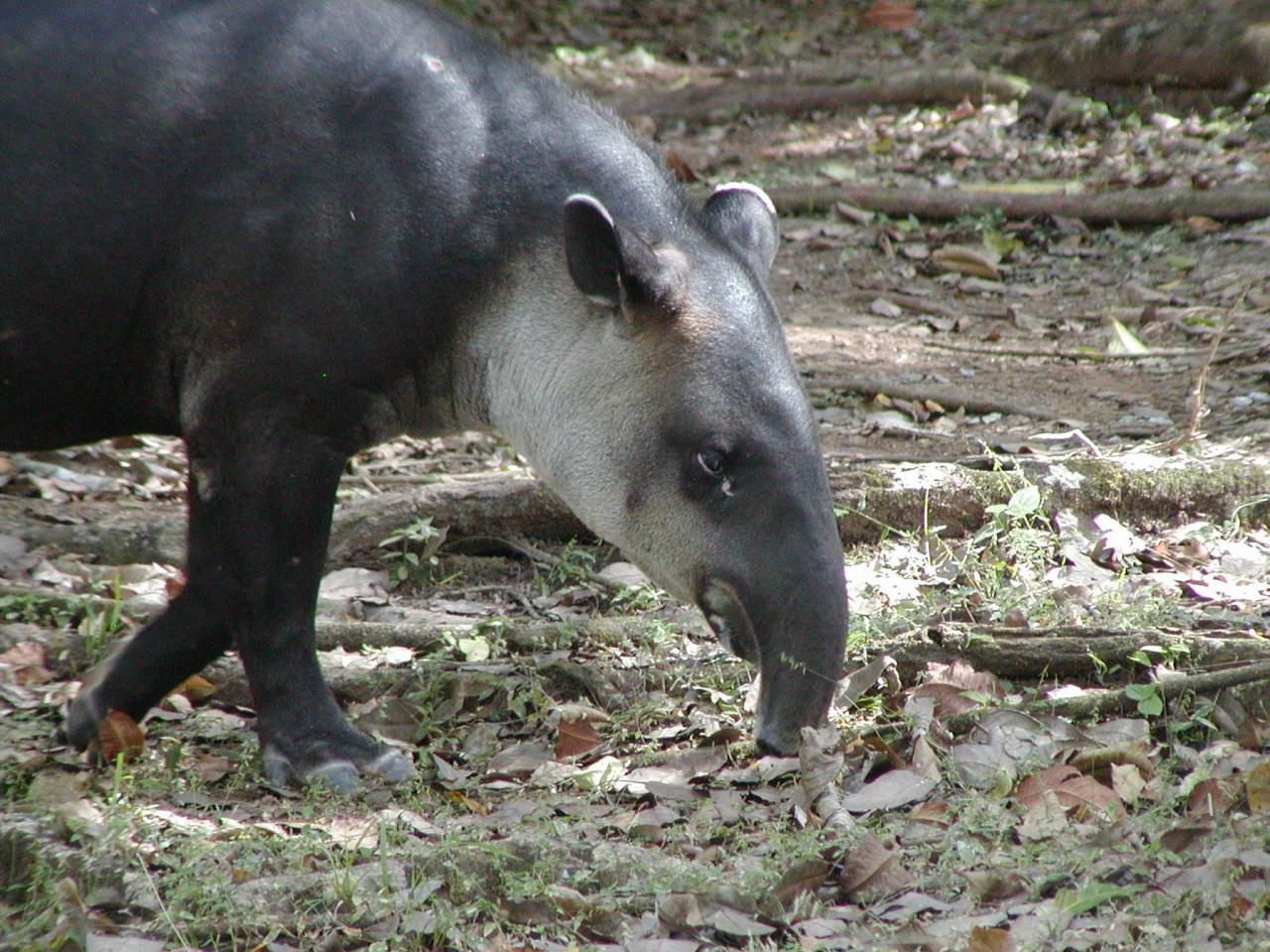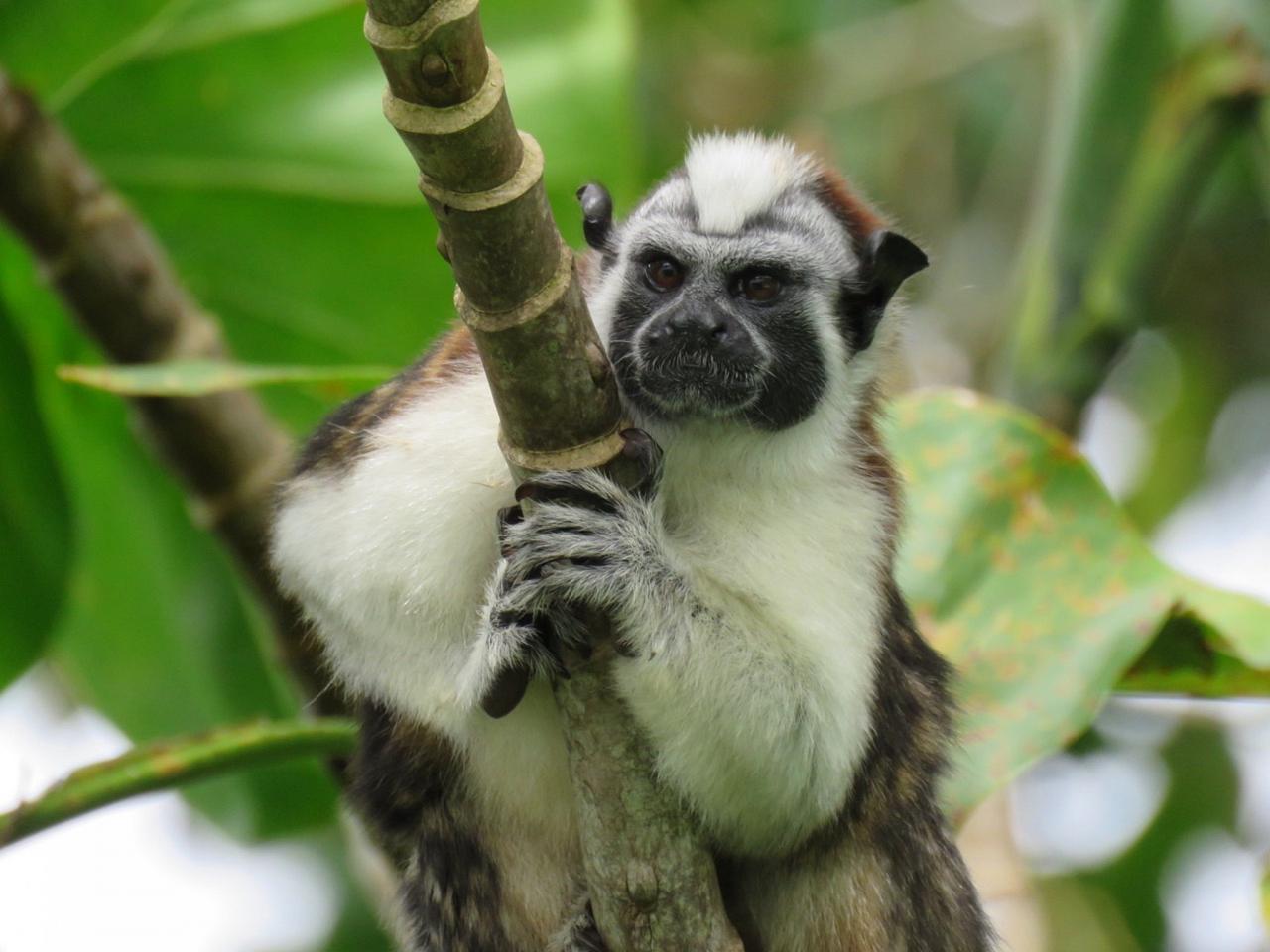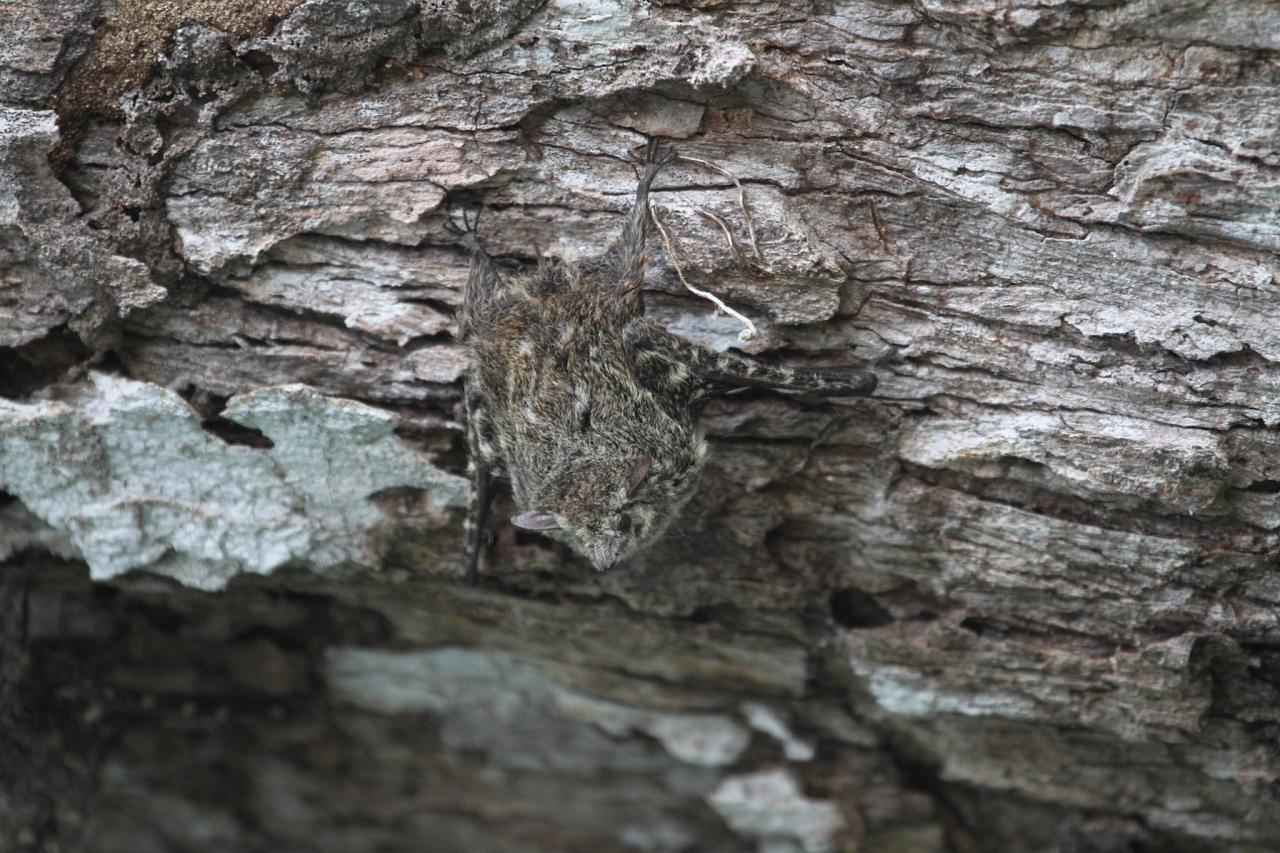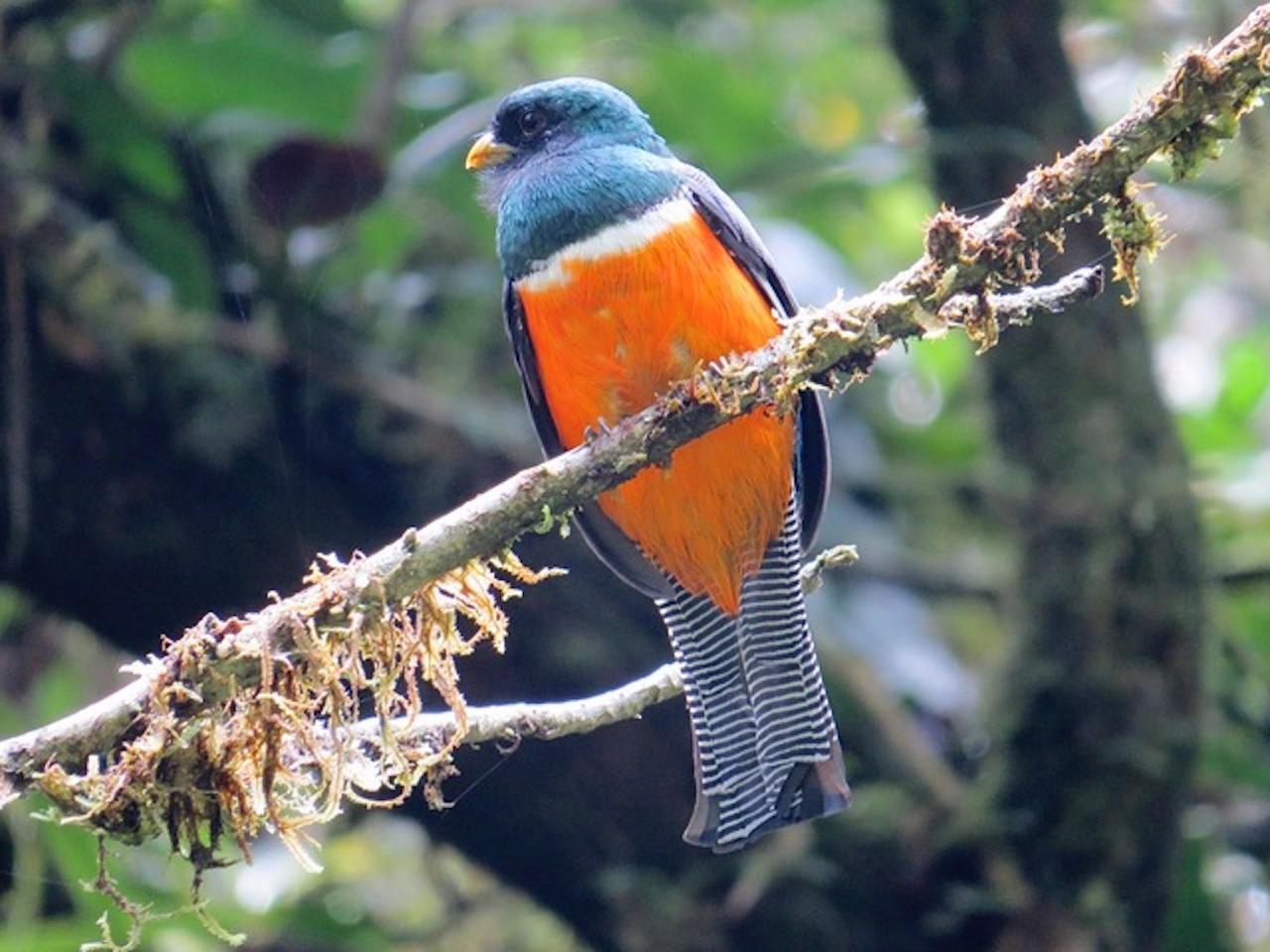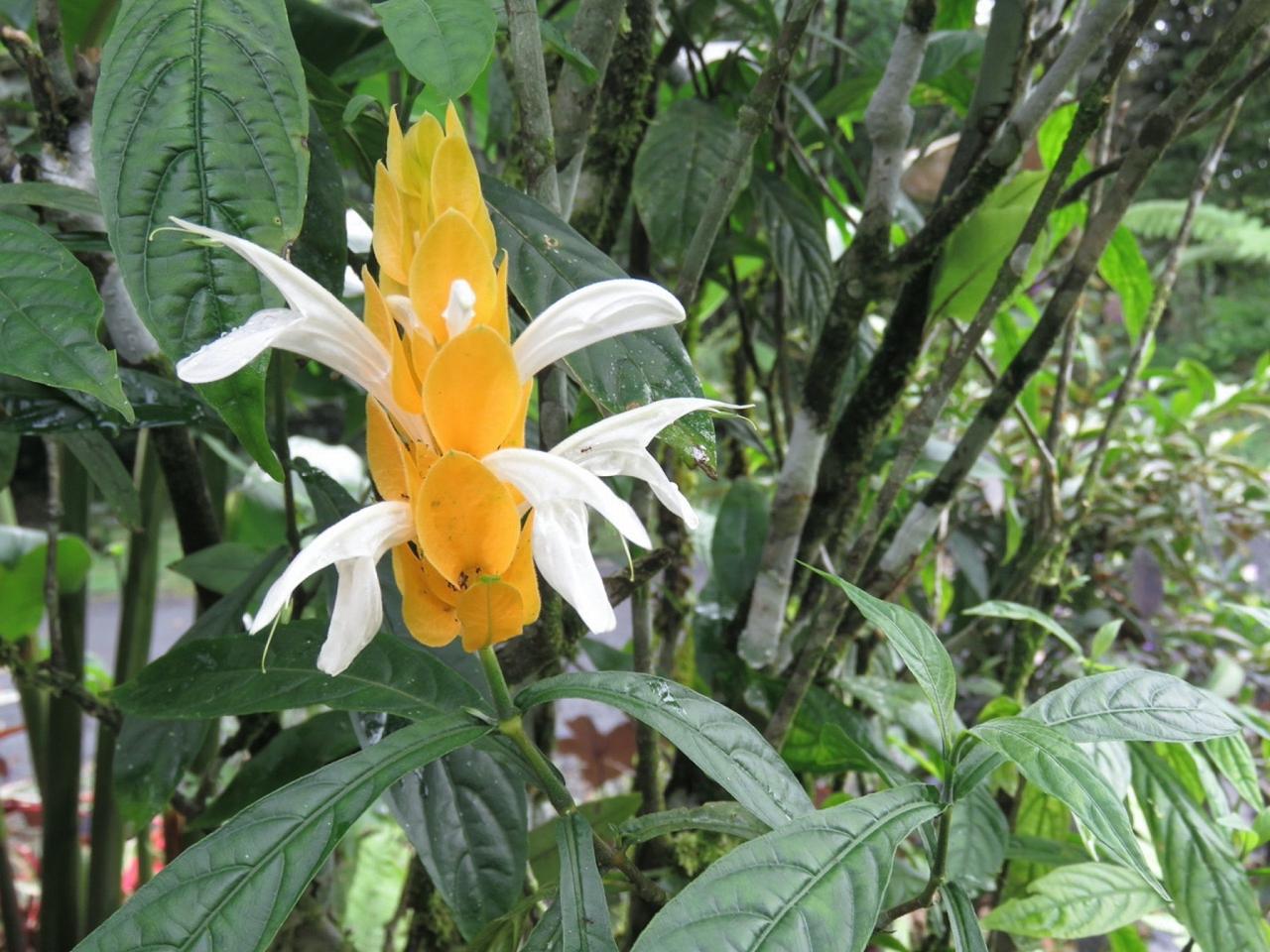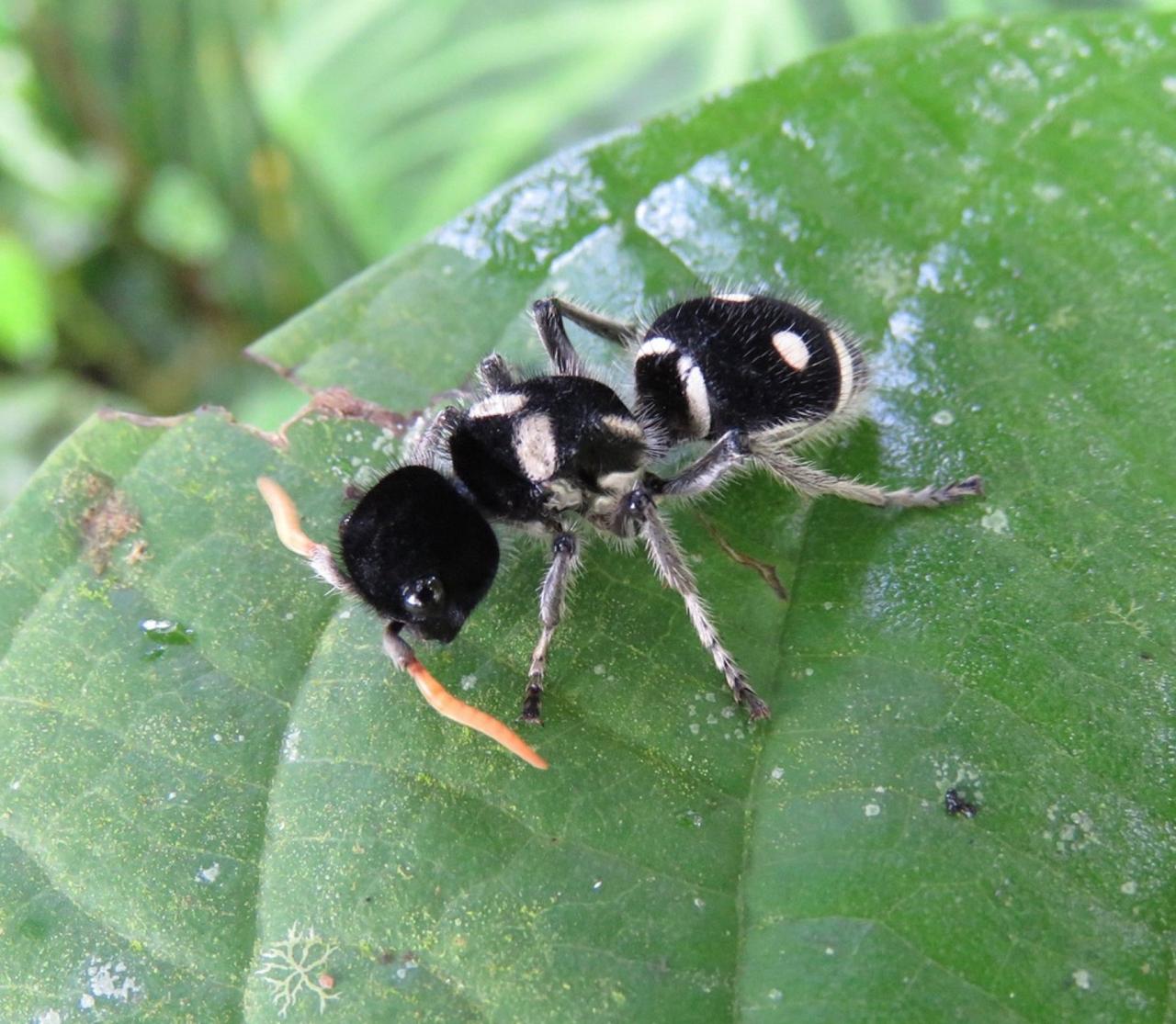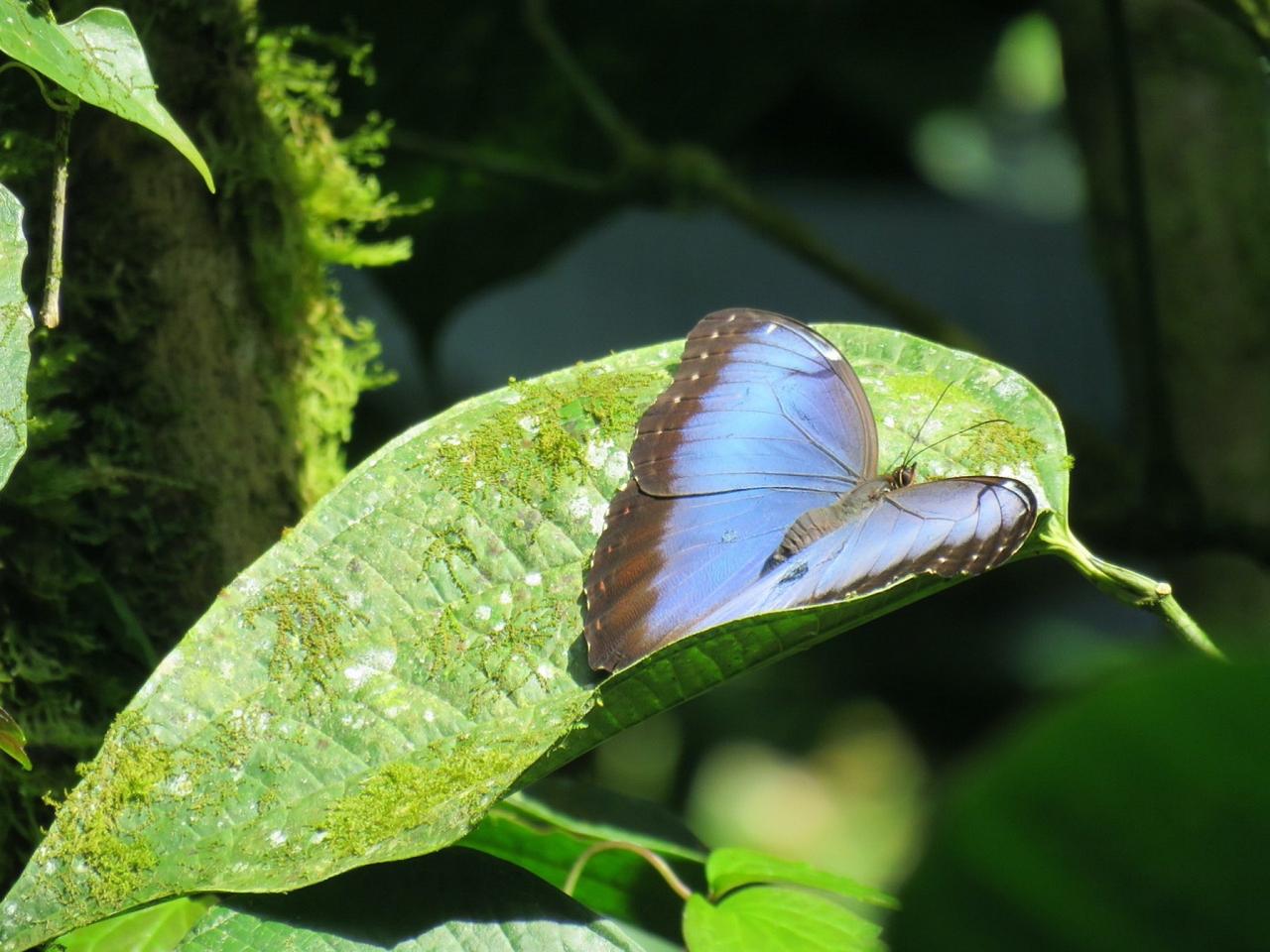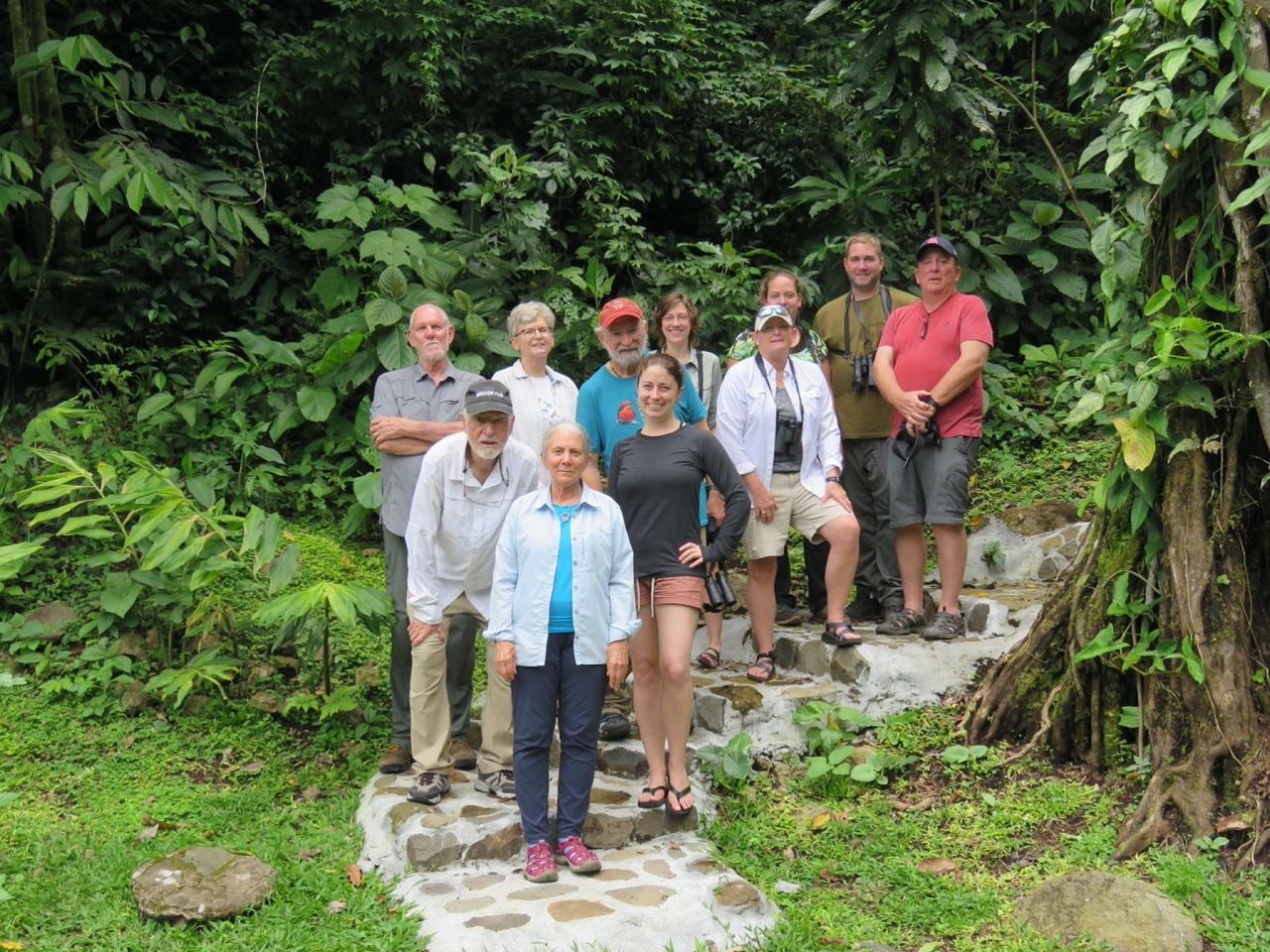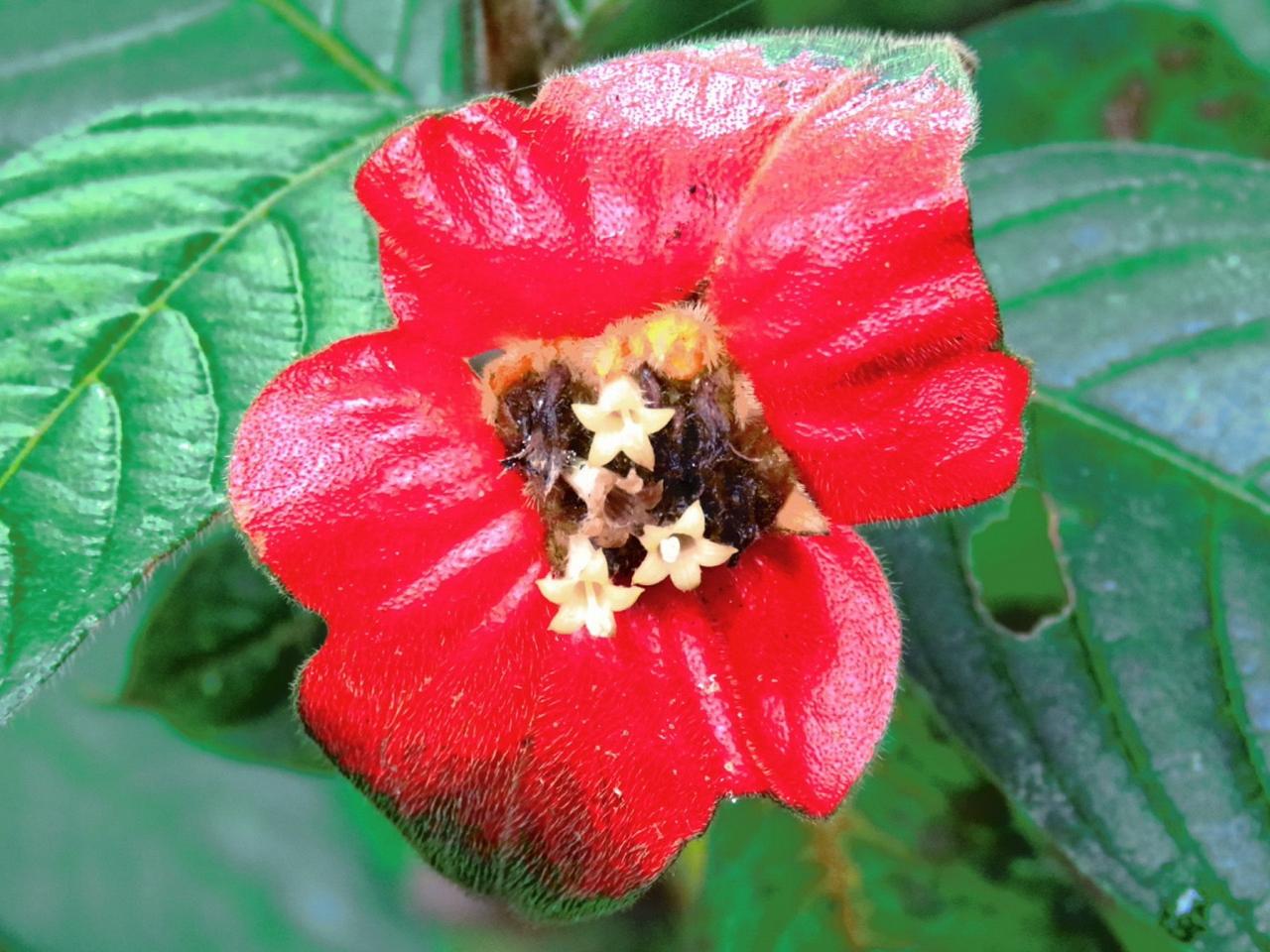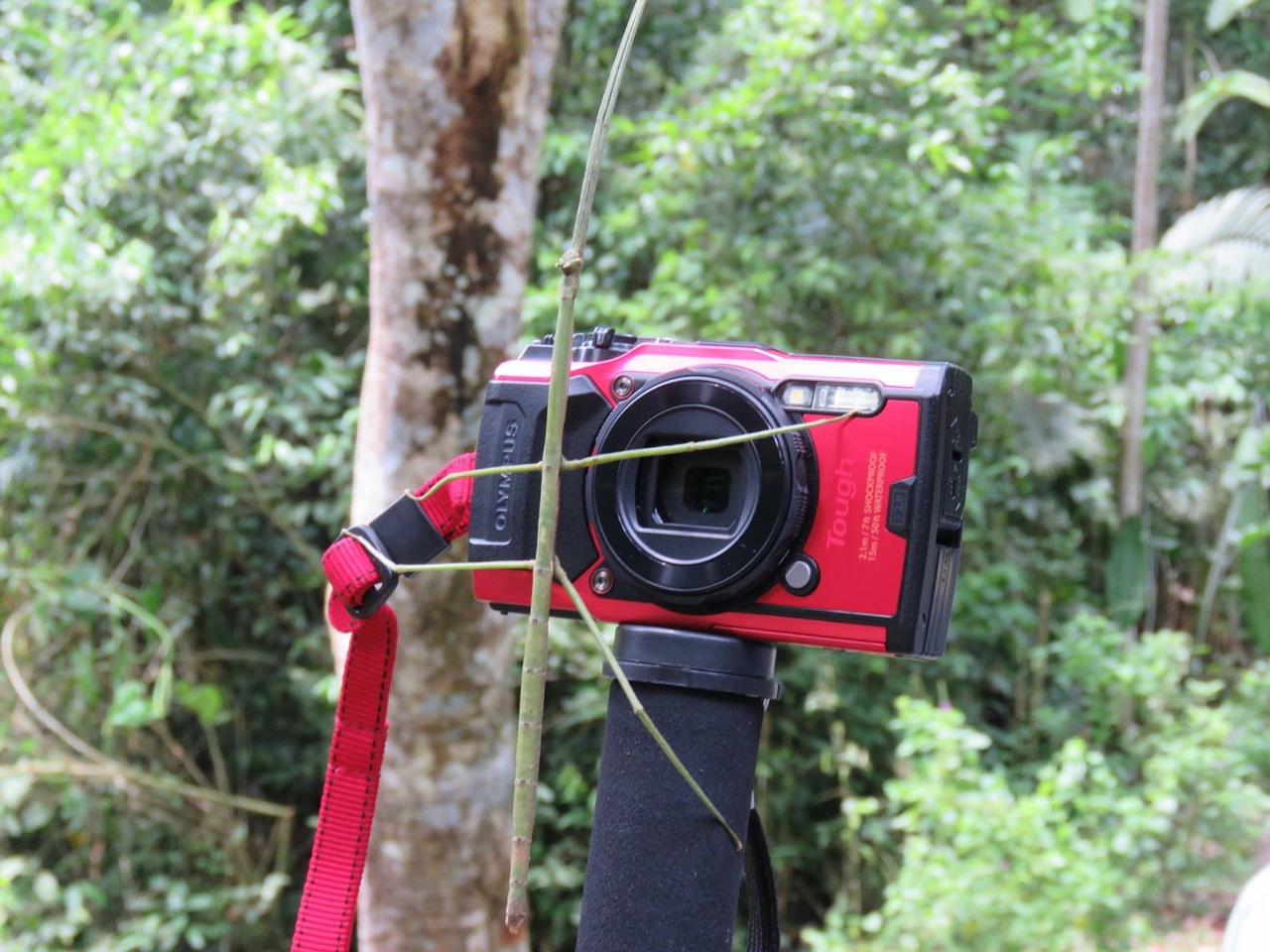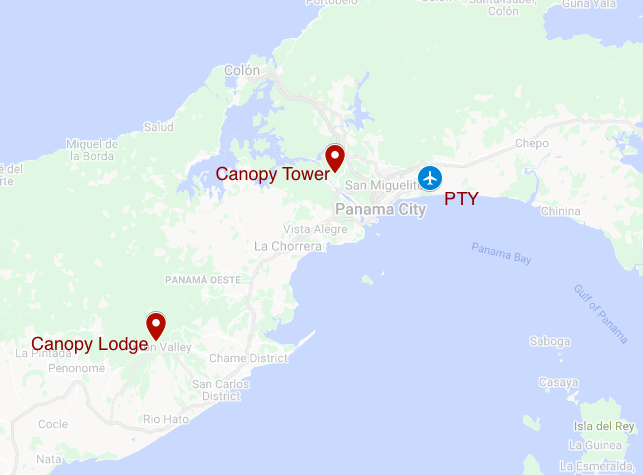- Overview
- Full Itinerary
- Photo Gallery
- Costing
- Travel Details
- Trip Reports
- Guide
- Map
- Know Before You Go
Tropical environments and ecosystems hold amazing wonders and are extremely diverse compared to their temperate counterparts. When you first step into a tropical forest, you may be overwhelmed by the sights, sounds, and smells around you. In Panama, with very little driving, we are within close reach of many distinct biomes and ecosystems teeming with plant and animal life. Location, elevation, and climate influence these environments and the plants and animals within and are all part of an intricate and delicate web of interactions. From the towering canopy above to the soil beneath your feet, there is life lurking around every nook and cranny.
Naturalist Journeys teams up with our colleagues at The Canopy Family to once again offer a special Tropical Rainforest Biodiversity tour, featuring guest scientists Dr. Howard Topoff and Dr. Carol Simon, formerly of the City University of New York and the American Museum of Natural History, as they share their expertise on tropical environments and biodiversity. Howard and Carol reside in our home office town of Portal, Arizona, and have led a number of past tours for us including to Trinidad and the Galapagos. They are knowledgeable, fun, and dedicated to helping you see this incredible environment in a whole new way.
Spend time exploring the forests in search of birds, mammals, frogs, insects, and fascinating trees and plants. Almost every day there is an informative and entertaining presentation on a wide variety of tropical biodiversity topics. Top birding guides from the Canopy staff join Howard and Carol on outings. Lodging is at the world-famous Canopy Tower, surrounded by the lowland tropical forests of Soberania National Park, and the fabulous Canopy Lodge, in the picturesque foothills of El Valle de Anton, both perfect locations for exploring tropical ecosystems.
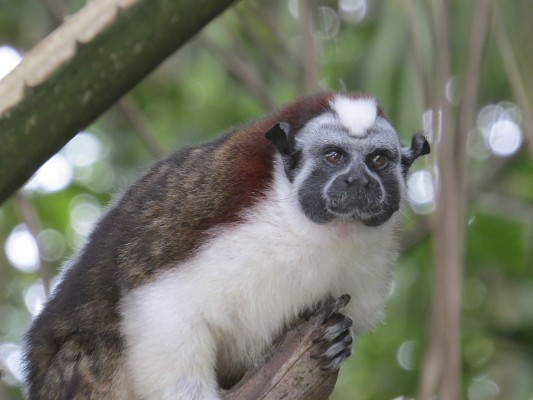
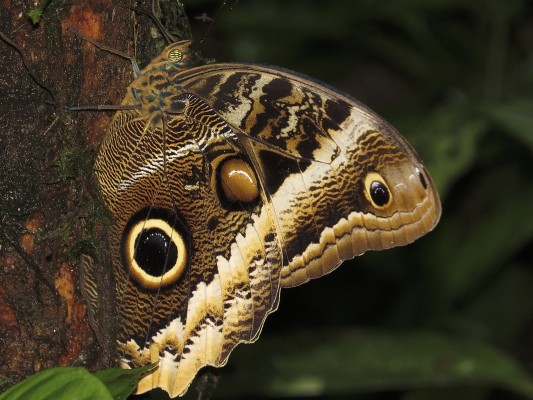
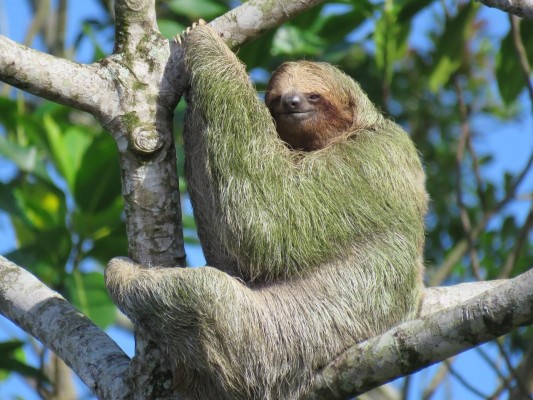
Tour Highlights
- See Red-lored Parrot, Keel-billed Toucan, and Palm and Golden-hooded Tanagers right from Canopy Tower
- Watch Geoffroy’s Tamarin, Mantled Howler, and Brown-throated Three-toed Sloth in the surrounding forests
- Search for Broad-billed Motmot, White-whiskered Puffbird, Gartered Trogon, South American Common Toad, Northern Tamandua, and more along Plantation Road
- Spend time at the Summit Botanical Gardens, which houses more than 100 non-releasable animals — a great way to study many species difficult to see in the wild
- Walk the famous Pipeline Road, which boasts over 500 species of birds, as well as hundreds of mammals, reptiles and amphibians, and even more insects and trees and plants
- Visit the BioMuseo along the Amador Causeway in Panama City, and explore its several halls that focus on the biodiversity of the isthmus of Panama
- Explore by boat on Gatun Lake, looking for Lesser Capybara, West Indian Manatee, and more
- Enjoy an afternoon at the Panama Canal, learning its history and watching cargo ships go through the locks
- Enjoy time at the Canopy Lodge, with cool mountain breezes and incredible birds on feeders and trails
- Learn about the herps that live in Panama's forests during a presentation by guide Carol Simon called “Poisonous Reptiles and Amphibians of the Rain Forest”
- Visit Cerro Gaital to learn more about the butterflies of the region, from the large Blue Morpho to the pretty little Passion Vine butterflies
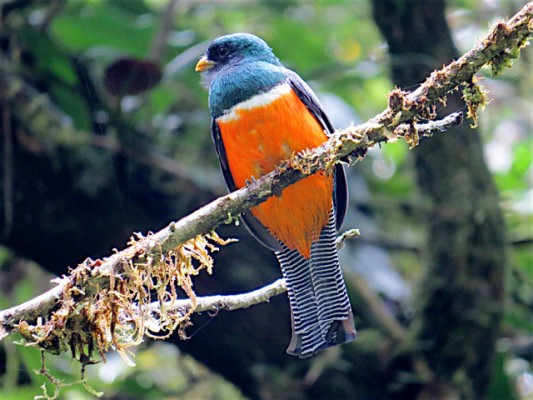
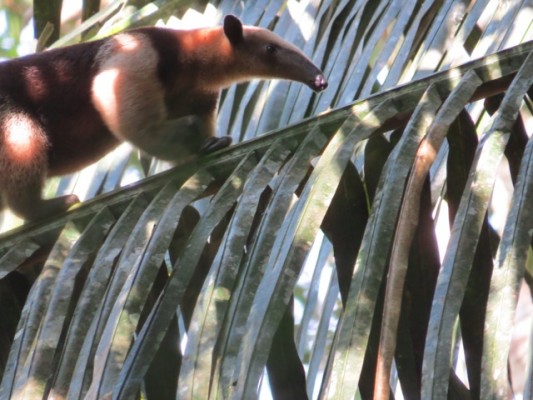
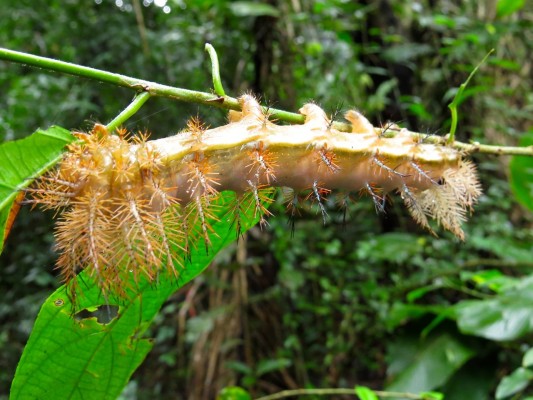
Trip Itinerary
Itineraries are guidelines; variations in itinerary may occur to account for weather, road conditions, closures, etc. and to maximize your experience.
Sat., Sept. 28 Arrivals in Panama City
Welcome to your Panama rainforest biodiversity workshop! You are met at the airport and transferred to the Canopy Tower Eco-lodge, just a 45-minute drive through Panama City to the lush lowland rainforests along the Panama Canal. After you enjoy a cold drink, we suggest you make your way up to the observation deck overlooking the vast forest canopy of Soberania National Park. The great raptor migration is underway, consisting of mainly Turkey Vulture and Swainson’s Hawk, with a mix of at least twenty other species. On a single day in 2014, it was estimated that two-million raptors passed over the narrow Isthmus of Panama. Raptors conserve energy during their long migrations by riding warm columns of air that form only over land. Thus the migrating birds are forced together over the isthmus and easily seen.
From the canopy observation deck you can view many stunning tropical birds but mammals and reptiles are present too. It’s common to see Geoffroy’s Tamarin, Mantled Howler Monkey, Brown-throated Three-toed Sloth, and Green Iguana in the rainforest canopy. Green-and-Black Dart Poison Frog have been seen just outside the front doors of the Tower, along with mating Turnip-tailed Gecko. Tungara Frog call loudly there and you can often find their foam nests nearby. It is an exciting place to stay.
Before dinner you meet your Canopy guide and guest scientists. During cocktails you can enjoy the first of Carol and Howard’s many multimedia presentations, entitled “Introduction to Tropical Rainforests.” Get ready for a great week!
Accommodations at Canopy Tower (D)
Sun., Sept. 29 Plantation Road | Summit Gardens & Harpy Eagle Exhibit
As we awaken to the roars of Mantled Howler Monkey in the distance, breathe in the fresh air and make your way up to the observation deck at dawn. This is the best time of day to observe the canopy, not only for the beautiful sunrise but also as bird activity is at its peak. With warm coffee or tea in hand, we watch for Red-lored and Mealy Parrots, Keel-billed Toucan, Black-cheeked Woodpecker, Masked Tityra, Green Honeycreeper, and dozens of other species of birds as they actively communicate and feed in the treetops.
After breakfast, we board one of the Canopy Tower’s specialized nature-watching vehicles and head slowly down Semaphore Hill Road, scanning the understory of the forest for animals such as the Central American Agouti and White-nosed Coati.
The Canopy Tower is surrounded by 22,000 hectares of lowland tropical rainforest of Soberania National Park, adjacent to the Panama Canal and mighty Chagres River. It is the perfect setting for our first morning. Just a five-minute drive away, enjoy an introductory walk along Plantation Road, one of the trails of Soberania National Park.
Walking through the forest with its towering forest giants (Ceiba and Cuipo trees), we spend the morning searching for animals, from tiny leafcutter ants on the ground to large raptors in the treetops. Broad-billed Motmot, White-whiskered Puffbird, Gartered Trogon, South American Common Toad, Northern Tamandua, and much more can be found along this trail. The rainforest is so full of life! After our morning walk we return to the Canopy Tower in time for lunch.
In the afternoon we visit the Summit Municipal Park and Botanical Gardens. Here are both wild and enclosed animals. Roaming freely we can find Central American Agouti, Central American Ameiva, Laughing Falcon, Tropical Mockingbird, and Crimson-backed Tanager, plus hundreds of species of other birds.
We visit some of the enclosures that house Panama’s native fauna. In the 1960s, Summit Botanical Gardens started receiving injured and non-releasable animals from all over Panama. Now, this facility houses over 100 animals, including macaws, spider monkey, Tapir, Jaguar, Puma, and Panama’s national bird, the Harpy Eagle. We stop to visit a non-releasable Harpy Eagle living at this wildlife refuge. It is a great opportunity to see some species that are rather difficult to encounter in the wild in Panama.
Back at the Canopy Tower, we meet at the cocktail hour for Howard and Carol’s early evening presentation. Almost every day our guest scientists choose a talk that fits the day, depending upon what was seen and participant interests. Possible topics include primates, social insects, reptiles and amphibians, tropical botany, animal coloration, animal communication, butterflies, the Panama Canal, and bird brains. Our scientists wish they could give them all (it is their goal to give eight!) but after all we do want to spend significant amounts of time in the field! Carol and Howard are with us ALL the time, however, and a lot of information is transmitted informally. For dinner we can expect an enjoyable blend of Panamanian and international fare.
After dinner we take a short night excursion, riding in one of the open vehicles and walking on a trail in the national forest. We listen for owls and potoos and scan the trees with a spotlight for Western Night Monkey, Kinkajou, Olingo, and other nocturnal wildlife. Frogs are abundant and we spot an occasional snake. If the weather doesn’t cooperate, we reschedule for another evening.
Accommodations at Canopy Tower (B,L,D)
Mon., Sept. 30 Pipeline Road | BioMuseo
After optional early time on the observation deck, head down to a hot breakfast at the Canopy Tower’s third floor dining room, surrounded by the forest canopy just outside the open windows. Then, we board our vehicle once again and head out to the world famous Pipeline Road—once an access road built during WWII to serve a pipeline installed as a precautionary measure for the Panama Canal. It was never used. About a 20-minute drive, this area is surrounded by mature secondary lowland forest and protected within the boundaries of Soberania National Park.
Pipeline Road boasts incredible biodiversity—over 500 species of birds have been recorded in these Caribbean slope forests, as well as hundreds of mammals, reptiles and amphibians, and even more insects, trees, and other plants. As we walk the first part of the gravel road, we watch for five species of trogons, Whooping and Rufous Motmots, Cinnamon and Crimson-crested Woodpeckers, three species of manakins, hummingbirds, raptors, peccaries, lizards, frogs, butterflies, insects, and more. It’s hard to decide whether to look up or down!
We hope to come across a swarm of army ants, where many species of birds attend the feeding frenzy! Howard is an army ant specialist, and we can look forward to his very entertaining talk on social insects. Central American Whiptails and Striped Rocket Frogs may be seen along the road. Our list from the morning alone will no doubt be extensive! After a full morning in this superb forest, we make our way back to the Canopy Tower for lunch.
This afternoon we visit the impressive BioMuseo, situated along the scenic Amador Causeway in Panama City. This spectacular and unique building, designed by renowned architect Frank Gehry, features several halls focusing on the biodiversity of the isthmus of Panama—from its geological beginnings through to modern day culture, the great faunal interchange over the land bridge and other fascinating exhibits. Our visit no doubt opens our eyes further to the incredible biodiversity of Panama. And don’t forget your binoculars; we may see Brown Pelican and Magnificent Frigatebird flying over the Pacific entrance to the Panama Canal.
Back at the Canopy Tower, we meet in the lounge for cocktails and appetizers before dinner and if time permits, Howard and Carol choose a talk from their extensive repertoire.
Accommodations at Canopy Tower (B,L,D)
Tues., Oct. 1 Summit Ponds & Old Gamboa Road | Old Gamboa Resort Grounds
We start our morning once again on the observation deck before breakfast and as the mist lifts from the valley we watch for Crane Hawk, Golden-hooded Tanager and Blue Dacnis in the treetops. Howler monkeys are sometimes seen here in the mornings also. After breakfast we visit one of the best sites down the road from the Canopy Tower. Our first stop is at the two forest lagoons. Here we can find Boat-billed Heron, Capped Heron, five different kingfishers, American Crocodile, Spectacled Caiman, Black River Turtle, Common Basilisk and so much more. We have even seen a Boa Constrictor here. Moving down the Old Gamboa Road we scan the grassy edges and emerging roadside trees for arriving migrants, as many species of raptors, warblers and flycatchers are passing through Panama on their way to South America. Leafcutter Ant highways cross the path several times. Variegated Squirrel and White-nosed Coati are just some of the mammals we may find. We are sure to have a great morning. We return to the Tower for lunch.
In the afternoon we visit the Old Gamboa Resort Grounds. The Chagres River is the main tributary for the Panama Canal. Here Embera Indian Trails lead from the river, and we often see individuals fishing from their canoes. The birding along the banks and forest edges of Gamboa Resort can be spectacular, and so is the tropical vegetation. Here you may be “kissed” by Psychotria, commonly known as Hot Lips. And if you are fond of Panama hats, you may interested to see the Toquilla Palm, whose leaves are woven to make your hat. There is a butterfly house and the Verbena shrubs around it attract dozens of species of butterflies, including Erato Longwing, Apricot Sulphur, Banded Peacock, and Banded Orange. There is also a sloth recovery center and a dart poison frog display. We may even find some bats, hiding out in the daytime. After a pleasant afternoon we make our way back to Canopy Tower for our evening talk.
Accommodations at the Canopy Tower (B,L,D)
Wed., Oct. 2 Boat Tour on Gatun Lake | Miraflores Locks | Canopy Lodge
As always, we can enjoy early morning hours on the observation deck where we find one of Canopy’s great bird guides scanning the forest surroundings with a scope. After breakfast, we board a small, covered boat for a spectacular outing on the Panama Canal. Most of the Canal is actually an artificial lake, Gatun Lake, and our tour takes you from Gamboa—just 15 minutes from the Canopy Tower—to the edges and inlets of this large lake.
We first start exploring the edges of the mighty Chagres River, where Common and Purple Gallinules, Rufescent Tiger-Heron, Amazon Kingfisher, and Spectacled Caiman may be found. Along the way to Gatun Lake along the Panama Canal we pass huge cargo ships and ocean liners; American Crocodile are seen basking along the beaches and we should spot Common Basilisk, also known as Jesus Christ Lizard (for their ability to run across the water). We visit hidden coves and beautiful inlets with fascinating fauna and flora, and search for White-faced Capuchin and Mantled Howler Monkey along the water’s edge.
Before lunch at the Tower, Carol and Howard present their very informative talk about the building and running of the Panama Canal. You won’t want to miss this one!
After lunch, we take our bags and bid farewell to the Canopy Tower, heading for the Miraflores Locks of the Panama Canal. The canal is truly one of the wonders of the modern world. The Miraflores Locks are the first set of locks on the Pacific side of the canal. They operate 24-hours a day and have changed very little since 1914 when the Panama Canal opened. The Panama Canal is an engineering marvel, and opened up a new route for shipping ocean-to-ocean. Over 14,000 ships and boats pass through the Canal annually. At the Miraflores Visitor Center we visit the four-floor museum and watch large container ships pass through the locks from an observation deck. We also visit the new i-Max movie theater to learn more about the Panama Canal.
After our visit to the locks, we continue to drive west along the Pan-American Highway, passing by Pacific dry forest and scrub fields, at times with great views of the Pacific Ocean. Along the way, we keep our eyes open for Crested Caracara and other roadside birds. We arrive at the Canopy Lodge just in time for dinner, noting the cool, fresh air and the moist tropical forests around us.
Accommodations at the Canopy Lodge (B,L,D)
Thurs., Oct. 3 Walking Las Minas Road | Canopy Adventure | Visit to Mario Urriolla’s Reptile Facility
Early risers can enjoy the feeders near the outdoor dining area. There is an abundance of hummingbirds, including Long-billed Starthroat, Violet-headed Hummingbird, Snowy-bellied Hummingbird, Bronze-tailed Plumeleteer, Garden Emerald, and Black-throated Mango feeding among the verbena in the gardens. Thick-billed Euphonia, Rufous-capped Warbler, and Flame-rumped Tanager are common on the property. Central American Agouti also forage in the garden. A stream flows near the building and Common Basilisk bask on the rocks there every day. With a little patience you may see one run across the water.
After breakfast at the lodge, we continue our biodiversity tour along several roads, searching mainly for birds and insects. Las Minas Road follows a ridgeline, with sweeping vistas of forested mountains, speckled with grasslands and small fincas. The views from the higher elevations are fantastic, and on a clear day near the summit, both the Atlantic and Pacific Oceans can be seen! The road is lined with sensitive Mimosa, a plant that closes up quickly when touched. It is a great place to see some of the most beautiful tanagers, including Black-and-yellow, Bay-headed, and Emerald, as well many other birds. With luck we may encounter a group of feeding Northern Emerald Toucanet. It is also a great place for butterflies, as many skipperlings, satyrs, ticlears, hairstreaks, and clearwings flutter along the roadsides.
Next we visit the Canopy Adventure, a property right next to the Canopy Lodge. This area sports a zip-line and a swimming pool. We walk the heavily forested trails looking for Stream Anole, Brilliant Forest Frog, Turnip-tailed Gecko—and birds, of course. There is a very nice waterfall along the way. We get back in time for lunch on the lodge’s open-air patio, with a rushing stream beside.
After lunch we head out to meet Mario Urriola, a native of El Valle who has extensive experience and knowledge of the reptiles of the area. Mario is the owner of “El Serpentario Maravillas Tropicales,” a reptile facility in El Valle, which houses various species of snakes and lizards that can be found in the area. Up-close looks at some of these difficult-to-find creatures is paired with an informative narrative about local species. Mario is an important figure in the area for both education and conservation. Carol also has a strong interest in reptiles and amphibians and one of the presentations examines those that are poisonous or venomous.
Accommodations at Canopy Lodge (B,L,D)
Fri., Oct. 4 Exploring the Highlands at Altos del Maria
Departing after an early breakfast at the lodge, we’re off into the highlands of Altos del Maria. With the sunrise ahead of us, we climb into the mountains along the Continental Divide east of El Valle. Often engulfed by cloud forest mist, Altos del Maria sits at an altitude of 3,600 feet. Today we can find highland forest birds, including Black-crowned and Streak-chested Antpittas, White Hawk, Barred Forest-Falcon, Spotted Barbtail, Tufted and Sulphur-rumped Flycatcher, Rufous-browed Tyrannulet, Orange-bellied Trogon, and the tiny yet stunning Snowcap. We hope to see a tiny Western Pygmy Squirrel working away in the treetops, too. Plants are not to be ignored and this is a good place to see the large white Sobralia orchid. This was the last site where the Panama Golden Frog, actually a toad, was seen in the wild. Many other amphibians live here such as Brilliant Forest Frog, Red-eyed Tree Frog, and the huge Marine or Cane Toad.
Carol’s favorite walk is here, on a paved path along a narrow, riparian canyon through a lush-forested realm. One Naturalist Journeys group spied a Tayra here! After a picnic lunch in the field, we return back to the Canopy Lodge by mid-afternoon. It should be a good evening for one of our presentations during the cocktail hour.
Accommodations at Canopy Lodge (B,L,D)
Sat., Oct. 5 Butterflies & Birds of Cerro Gaital | Artisan & Fruit Market | El Valle Amphibian Conservation Center
This morning, while birding (there is always a Canopy bird guide with us) and searching for other animals in the forest, such as the deep forest Dunn’s Spiny Lizard, we take a close look at the fascinating world of butterflies and insects in Central America. The biodiversity of butterflies (and moths, their nocturnal counterparts) is incredible in tropical regions around the world, and Panama alone has over 1500 species! From the beautiful metallic blue of the large Blue Morpho, to the pretty little Passion Vine butterflies (Heliconius spp.), tropical butterflies always get noticed. We look for eye-catching species like Mimosa Yellow, Deep-blue Eyed-Metalmark, Sara Longwing, Orange Mapwing, Togarna Hairstreak, Puerta Satyr, Red-headed Firetip, and the crepuscular Yellow-bordered and Giant owl-butterflies roosting along the trails. Insight into the lives of butterflies—their life cycles, how they eat, and various methods to evade predation—are just a few of the interesting topics we explore. We return for lunch at the Lodge.
This afternoon, it’s on to El Valle Amphibian Conservation Center (EVACC), which began in 2006 in response to massive chytridiomycosis (fungus) related amphibian declines in the area. Here we can still see the Panamanian Golden Frog, which is extirpated in the field. This facility has not only successfully bred the Panamanian Golden Frog, but over 40 other amphibian species, too. Their main objective is to preserve and protect some of the most endangered amphibian species in Panama.
Next we visit the artisan and fruit market in the heart of El Valle de Anton. The market is run by Panamanian artisans from Guna Yala who sell beautiful “molas”—handmade panels sewn by combining layers of fabric and showing geometric and animal designs, hand-painted wooden decorations, paintings, and jewelry. The market in El Valle is very colorful, and a great place to take photos and purchase souvenirs before returning home.
Tonight is our celebratory farewell dinner, which allows us to reflect upon our days together. We have seen and heard a lot!
Accommodations at the Canopy Lodge (B,L,D)
Sun., Oct. 6 Departures
This morning participants are scheduled to leave in small groups so everyone gets to the airport in time for their flights. It takes about 2 1/2 hours to get to the airport from the Lodge and you are scheduled to leave in plenty of time to catch your flight. We can also drop you at a nearby airport hotel if you prefer to start early tomorrow.
One last look around the grounds of the beautiful Canopy Lodge stays with us for a very long time! (B)
Cost of the Journey
The cost of this journey is $3100 per person, from Panama City. This all-inclusive rainforest tour includes lodging and meals at the Canopy Tower and Canopy Lodge, bilingual professional guides, wine with dinner, group airport transfers to and from Panama City and all tours and presentations as per the itinerary. This cost does not include flights to and from Panama City, tips and alcoholic beverages (apart from dinner).
Travel Details
Please plan to make air travel plans only after the minimum group size has been met. We will send you a confirmation email as soon as the trip has been confirmed.
Arrival: September 28, 2024
Arrival Airport: Tocumen International (PTY) You may arrive any time before 2:30 PM; the shuttle to the lodge leaves no later than 2:30 PM
Departure: October 6, 2024
Departure Airport: Tocumen International (PTY)
Travel Tips: If your flight comes in late, we suggest you arrive a day early to rest up from your travels. There are three hotels quite close to the international airport, the closest two are the Riande (a bit dated but with gardens and a pool), the Crowne Plaza (newer) with the Courtyard by Marriot a bit farther and by a mall. All of these have a convenient shuttle service. It is about 35 - 40 minutes into the city, pending traffic. If you have time to explore we recommend the Radisson Panama Canal which has rooms with balconies overlooking the entrance to the Canal and is located within walking distance of the Biomuseo museum of biodiversity. Casco Viejo is now a trendy area having been totally refurbished in the last 25 years. There are shops, restuarants, quite a few boutique hotels, the Cathedral, an excellent museum on the Panama Canal, and a terrific view back on the modern city. Another boutique hotel known for its welcoming hospitaliy is the Bristol. The Canal location and Casco Viejo require taking a taxi. The Canopy Tower and Lodge have set times for transfers to their facilities included with your stay, private transfers can be arranged outside of these times at additional cost. Once we have all of the group member's information on arrivals we can let you know the times and where to meet. They can pick up at airport hotels for these timed shuttles, and for city locations, this would be a private transfer.
Entry Requirements: See "Essential Information" section under the "Know Before You Go” tab.
Browse below for trip reports and species lists from past versions of this and other tours from this destination.
Panama
- February 2011
- March 2012
- January 2013
- February 2015
- January 2018
- January 2019
- January 2020
- January 2020
- October 2021
Birds & Mammals
- February 2019
- February 2020
- April 2022
- March 2023
- March 2024
- March 2025
Darién
- February 2016
- March 2017
- July 2019
- July 2022
- July 2023
Green Season
- July 2012
- August 2014
- July 2019
- July 2024 (Three Lodge Tour)
Intro to Biodiversity
- October 2019
- October 2021
- September 2023
- September 2024
Tranquilo Bay
- January 2022
- April 2022
- October 2022
- January 2023
- March 2023
- April 2023
- October 2023
- January 2024
- February 2024
- March 2024
- April 2024
- October 2024
- November 2024
- January 2025
- February 2025
- March 2025
-
Drs. Howard Topoff & Carol Simon
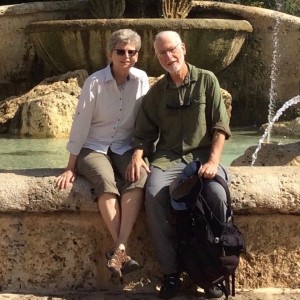
Drs. Howard Topoff and Carol Simon have been study leaders on natural history trips for over 30 years. Both are formerly professors at the City University of New York and Research Associates at the American Museum of Natural History. Howard Topoff has spent 40+ years researching the social behavior of animals. His field research has been conducted in Central and South America, Africa, and in the deserts and mountains of Arizona. In addition to his publications in scientific journals, his more popular articles have appeared in magazines such as Scientific American and Natural History. His research has been featured on National Geographic Television, and Scientific American Frontiers. Carol Simon is broadly trained in ecology, behavior and evolution. Her research on the social behavior of reptiles has taken her to many areas of North and Central America. Her current field research on reptile behavior is based in the Chiricahua Mountains of Arizona. As an added bonus, Carol and Howard provide multimedia presentations that provide in-depth insights into the natural history of the regions visited.
Other trips with Drs. Howard Topoff & Carol Simon
-
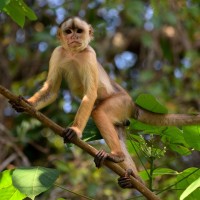 Trinidad's Biodiversity & Animal BehaviorJune 20 - 29, 2025
Trinidad's Biodiversity & Animal BehaviorJune 20 - 29, 2025 -
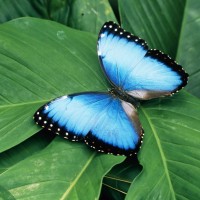 Panama: Intro to Tropical Biodiversity FULL - Check out Panama: Three Great Lodges!September 23 - October 1, 2025
Panama: Intro to Tropical Biodiversity FULL - Check out Panama: Three Great Lodges!September 23 - October 1, 2025
-
Essential Information +
Pace & Protocols +
Packing List +
Suggested Reading List +
Useful Links +
Photo credits: Banners: Collared Aracari, ERWA; Three-toed Sloth, Peg Abbott; Panamanian Night Monkeys, Carla Bregman; Orange-collared Manakin, Bob Hill; Panama Canal Scenic, Howard Topoff; Red-eyed Tree Frog, Daniel Arias Barakat. Geoffroy's Tamarin by Howard Topoff; Butterfly by Howard Topoff; Three-toed Sloth by Howard Topoff; Orange-bellied Trogon by Howard Topoff; Tamandua by Howard Topoff; Saturnid Moth Larvae by Howard Topoff; Capybara Family, Peg Abbott; White-whiskered Puffbird, Sandy Sorkin; Broad-billed Motmot, Naturalist Journeys Stock; Collared Trogon, Terry Peterson; Snowy-bellied Hummingbird, James P. Smith; Crimson-crested Woodpecker, Mike Boyce; Spectacled Owl, Sandy Sorkin; Streak-chested Antpitta, Sandy Sorkin; Gallery photo credits: By Peg Abbott: Howler, White-faced Capuchin, Tapir, Proboscis Bat; By Howard Topoff: Geoffroy’s Tamarin, Collared Trogon, Shrimp Plant, Velvet Ant, Ble Morpho, Group, Hot Lips plant, Walking Stick taking a selfie.







